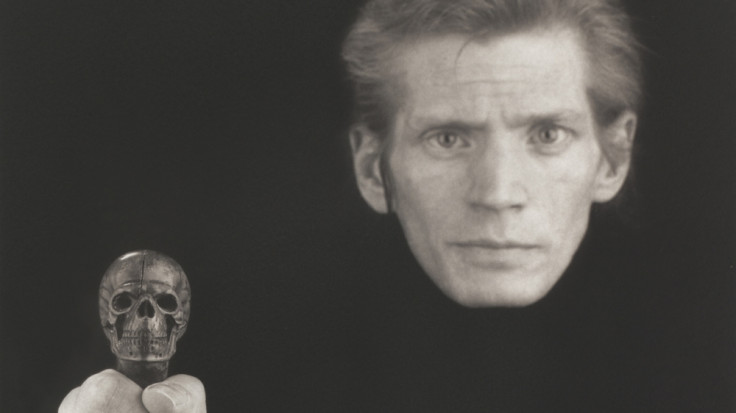How Robert Mapplethorpe's controversial images turned photography into a high-art form

A new HBO documentary film Mapplethorpe: Look at the Pictures underpins the defining moment when pictures considered pornography by right-wing Christians became a highly-lucrative commodity.
Hated by traditionalists and loved by art critics, Robert Mapplethorpe was described as a guerilla rebel demonised by Conservative politics. Republican senator Jesse Helms was scandalised by the homoerotic pictures, stating, "The American people... are disgusted with the idea of giving the taxpayers' money to artists who promote homosexuality insidiously and deliberately, who desecrate crucifixes by immersing them in urine, and others who will engage in whatever perversion it takes to win acclaim as an artist on the 'offending edge' and therefore entitled to taxpayer funding."
In 1989, from the floor of the US Senate, Helms protested against Mapplethorpe's "obscene" art, daring his colleagues to "Look at the pictures." Another opponent was Dick Armey, a Republican from Texas who alerted attention to a retrospective entitled Robert Mapplethorpe: The Perfect Moment, scheduled to open at Washington's Corcoran Gallery of Art in July 1989. He condemned the work as "morally reprehensible trash."

With enemies like these, Mapplethorpe didn't need many friends to champion his art. To shock and titillate the audience is essential for a big box office draw and to pull in the crowds. What's surprising is that over 25 years later, the American photographer's work still has the capacity to widen our our eyes and startle us today, with a good measure of humour thrown in for an intoxicating mix. As the documentary film-makers Barbato and Bailey say: "There's no reason why a serious work of art can't also be amusing or funny. They shouldn't necessarily be mutually exclusive."
The maxim that sex sells was supplanted in Mapplethorpe's work, who always took things further, by replacing the adage with sadomasochism sells even more. His work is not only considered high art today but also fetches some of the highest prices at auction. His audacious piece Man in Polyester Suit, 1980, of a black man with his penis hanging out of his flies, fetched $478,000 (£323,000) at Sotheby's New York.
Many people know the Robert Mapplethorpe, synonymous with gay leather bars, BDSM and the notorious bullwhip inserted in his anus. But the film Mapplethorpe: Look at the Pictures, shows us a different side of the artist from accounts of family, friends and lovers. His sister fondly remembers her younger brother who was just a regular kid, famed for his endurance on the pogo stick and ability to sit on a couch and chew his toenails.
The documentary charts Mapplethorpe's early days in Queens, New York City, from the religiously devout Roman Catholic youth, who attended mass at Our Lady of the Sorrows, to the bête noire of the art world, achieving notoriety for having his show The Perfect Moment, closed down by the police in Cincinnati on charges of obscenity. Interestingly, the jury was not as horrified by the photographs as the police and politicians were, taking just two hours to come up with a not guilty verdict.
The film is important in defining the turning point when photography became considered high art and sophisticated enough to grace the walls of the rich and famous. As Barbato and Bailey say: "You can see the art form of his work, the beauty, the composition, and the creativity." Sadly, Mapplethorpe's commercial success took off when he was about to die. He was diagnosed with Aids in 1986 and died in 1989 at 42 years of age.
At the time, no one knew how valuable a Mapplethorpe picture would become. Fran Lebowitz, actor and friend of the photographer, who described him as a "ruined cupid", was given several prints by Mapplethorpe, which would have been worth thousands of pounds. Asked by the directors what she did with them, Lebowitz shamefacedly admitted to throwing them away. "I feel sick at the thought of it," she said.
After the retrospective show at the Whitney Museum in 1988, and rumours of Mapplethorpe's medical condition spread, sales of his photographs skyrocketed. Art dealer Howard Read is reported to have sold over $500,000 worth of prints in the month of December alone.
To date, the most expensive Mapplethorpe print is of Andy Warhol (1987), which sold for $643,200 (£447,000) at Sotheby's New York, October 2006 and was taken two years before Mapplethorpe's death. The value of the photographs is probably set to rise with a new auction at Christie's London on 20 May, with the most expensive item being KEN, LYDIA AND TYLER, 1985, estimated at £50,000 – £70,000.
As part of his legacy, the artist created the Robert Mapplethorpe Foundation a year before his death. The organisation has raised millions of dollars to help finance Aids and HIV medical research. Film makers Bailey and Barbato said: "Since his death, his foundation has made multi-million dollar gifts, enabling museums from the Guggenheim to the Getty to set up and maintain photography collections."
© Copyright IBTimes 2025. All rights reserved.






















